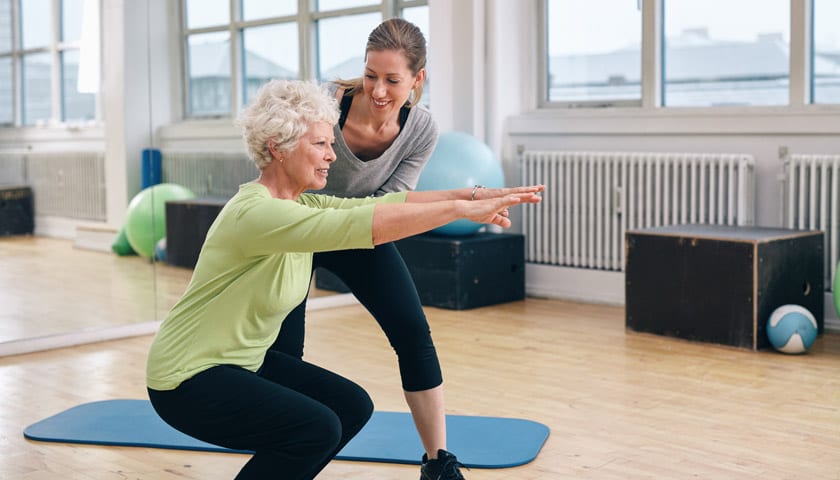
When you’re constantly suffering with the pain and fatigue associated with fibromyalgia, exercise may be the last thing that you want to think about. However, studies show that engaging in some type of daily exercise could be just the ticket to reducing many of the symptoms associated with this debilitating syndrome.
How Does Exercise Help?
Pain and stiffness are some of the chief complaints associated with fibromyalgia. Exercise gets the body moving. This increases blood flow and range of motion in joints and muscles to reduce stiffness and pain that can get worse when you don’t get up and move. Additionally, it has been found that those who exercise on a regular basis have improved mood and are able to sleep better at night. This can go a long way to reducing the chronic fatigue, depression, and brain fog that often occur as symptoms within the fibromyalgia syndrome.
Types of Exercises That Help with Fibromyalgia Symptoms
Just like most people, those with fibromyalgia should get a range of various activities into their days to provide maximum benefits to health. Some of the most helpful types of exercise involve stretching. Stretching is a good way to increase flexibility and range of motion to keep stiffness at bay. Stretching can include yoga and t’ai chi. These forms of mindful meditation not only stretch out muscles to keep you limber, but they provide mental calmness and focus that can help with other symptoms as well. Walking is a good exercise to get blood flowing to all parts of the body, including the brain. Cycling and swimming are easy on painful joints while providing the activity and movement necessary. Strength training is important to build muscle and to strengthen connective tissues.
How to Get Started with Exercise
It’s important to always talk with your health care provider before starting any exercise program. This will ensure that you have no medical problems that might prevent you from engaging in certain types of physical activity. Start slowly. You may experience an increase in pain and stiffness at first, but these will go away as long as you don’t overdo it. Begin by exercising just a few minutes each day. Breaking your workout up into several smaller bites throughout the day can make it easier to handle and keep you more limber without letting stiffness set in. Don’t stretch cold muscles. Do a small warmup, such as taking a stroll around the block, prior to stretching, to reduce risk of injury.

